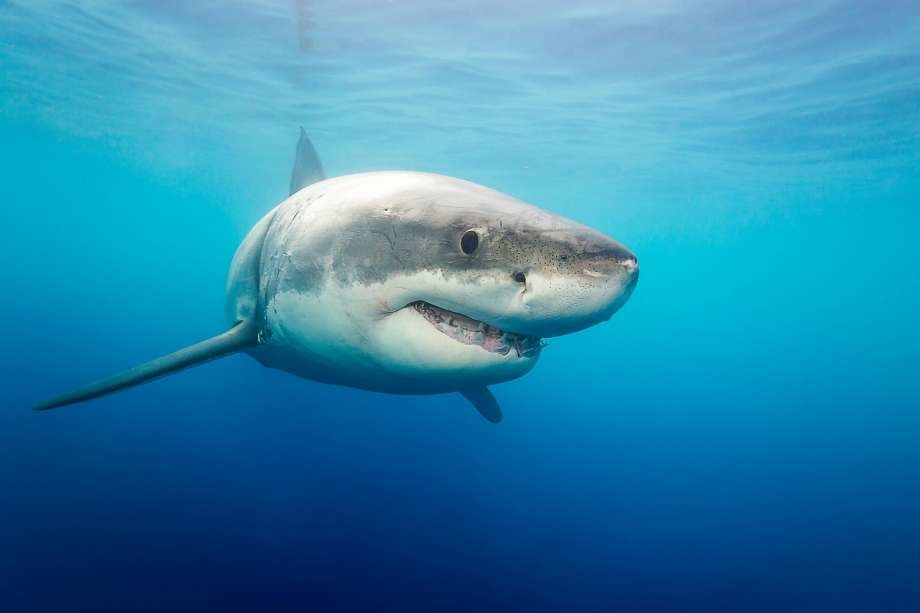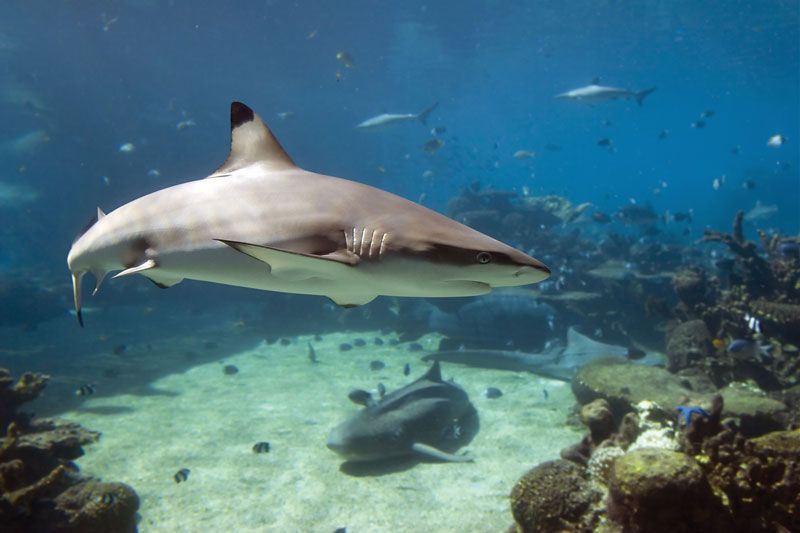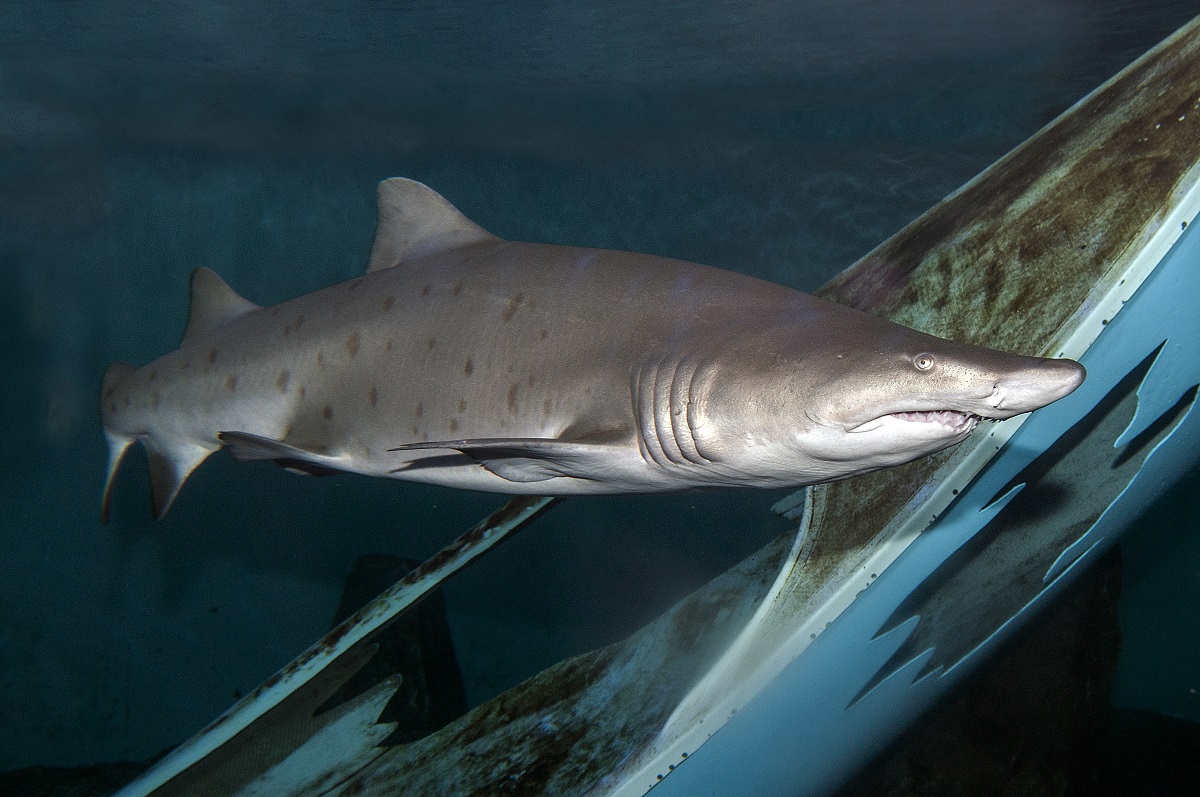Dusky shark eat Our Trash

The dusky shark (Carcharhinus obscurus) is a large, powerful shark species found in tropical and warm temperate oceans worldwide. Known for its sleek, brownish-gray skin and long pectoral fins, the dusky has an undeserved reputation as an aggressive, dangerous shark. In reality, it is normally quite shy and not considered a threat to humans. Let’s take a closer look at this majestic yet misunderstood ocean dweller.
Physical Characteristics
The dusky shark is a large species, reaching lengths of 10-14 feet and weights up to 400 pounds. It has a robust, streamlined body with a rounded snout and small eyes. Its most distinctive physical feature is its very long pectoral fins, which can reach one-fifth the shark’s total length. The upper side of the dusky shark is a grayish brown color, while the underside is white. This coloration allows the shark to camouflage easily against the dark water when viewed from above, and blend in with the bright surface when seen from below.
Young dusky sharks have a black marking on their tips of their fins, which fades as they mature. They also have very sharp, serrated teeth that enable them to bite and tear prey. Their powerful jaws and accelerated healing allow them to survive gruesome injuries, even partially healed bite marks from other sharks.
Habits and Habitat

The dusky shark lives in coastal tropical and warm temperate seas throughout the world. In the Western Atlantic, it is found from Massachusetts to Brazil and the Gulf of Mexico. It prefers water temperatures between 60-80°F.
Duskies spend most of their time swimming slowly along the ocean floor hunting for food. They are nomadic and migratory, traveling long distances between feeding and breeding grounds. They have been recorded undertaking massive migrations, like from South Africa to Australia.
These sharks are generally solitary hunters, gathering in groups by gender only for mating. They hunt at night, relying on their excellent senses of smell and electroreception to locate hidden prey buried in the sand. Fish, squid, octopus, shrimp, and even smaller sharks are all menu items. Their wide, powerful jaws allow them to swallow very large prey whole.
While the dusky shark spends most of its time near the ocean floor, it is an excellent swimmer and will pursue prey towards the surface or into shallower waters. Attacks on humans are extremely rare. There have only been 14 confirmed, unprovoked attacks by duskies, none fatal. Most interactions result from accidentally catching them on fishing lines. Spearfishing in murky water also raises the risk of encounters.
Reproduction and Lifespan
Dusky sharks reach sexual maturity between ages 16-21. Mating occurs during summer or fall. The ritual involves several males pursuing and biting the female to hold her for copulation. After a long gestation period of 22 months, the female gives birth to a litter of 6-14 live young. Baby dusky sharks are already 3 feet long at birth!
The young sharks spend their first few years in very shallow, protected waters like reefs and mangroves. Here they find plentiful small prey while avoiding larger sharks. As they mature, they venture out into more exposed coastal and offshore waters.
Dusky sharks have a long lifespan for sharks, living 30-45 years. Slow growth, late maturity, and few offspring make them very vulnerable to overfishing pressure. Several populations are now Endangered due to commercial fishing for their fins, hides, and meat. However, within well-protected marine reserves, healthy numbers still thrive.
Dusky Shark Eat Our Trash

One little-known fact about dusky sharks is that they sometimes consume trash that humans carelessly discard into the oceans. Being opportunistic feeders, the sharks will ingest all kinds of marine debris like plastic bags, Styrofoam, balloons, and discarded fishing gear. This junk provides no nutrition and can block their digestive systems, causing internal injuries and starvation.
According to one study, over half of dusky sharks caught off the Carolinas had plastic debris in their stomachs. Cigarette butts, plastic cutlery, children’s toys – you name it, they eat it. So this powerful ocean predator is suffering the negative consequences of human pollution and negligence. We need to be more responsible with our trash so it doesn’t end up hurting wildlife like the dusky shark.
Conservation
Due to severe population declines from overfishing, the dusky shark is classified as Endangered on the IUCN Red List. The U.S. National Marine Fisheries Service (NMFS) prohibits retaining, transshipping, landing, storing, selling or purchasing dusky sharks caught in the Northwest Atlantic, Gulf of Mexico, and U.S. Caribbean. The species is also listed on CITES Appendix II, meaning international trade is restricted and monitored. But more conservation action is urgently needed.
Key steps to protect dusky sharks including banning directed shark fisheries, enforcing strict catch limits in non-target fisheries, protecting critical nursery habitats, and expanding marine reserves. Public education is also important so recreational and commercial fishermen learn to safely release duskies alive. And of course, reducing marine pollution will benefit the health of these amazing sharks and the entire ecosystems they inhabit.
With dedicated ongoing conservation efforts, we can restore dusky shark populations while protecting public safety. These formidable yet vulnerable predators have swum the oceans for millions of years – hopefully our careless actions don’t lead to their extinction. If given the chance, future generations should still be able to marvel at the sleek dusky gliding through our seas.